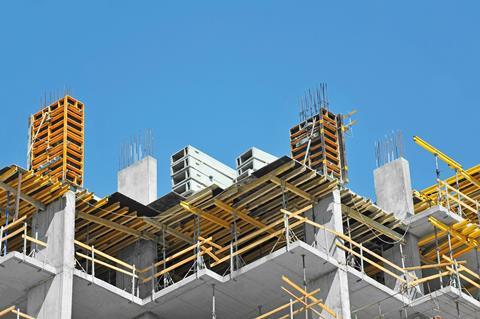- News

All the latest updates on building safety reformRegulations latest
- Focus
- Home
- News
- Focus
- Comment
- Events
- CPD
- Building the Future
- Jobs
- Data
- Subscribe
- Building Boardroom
Does the key to cutting carbon lie beneath your feet?
By Thomas Lane2022-04-29T06:00:00

Source: Shutterstock
The flat floor slab has been the default option for years but they contain the bulk of a building’s embodied carbon. What are the alternatives?

Source: Shutterstock
The flat slab has become the default option for office buildings as it offers a shallow structural zone, is quick to erect and makes installing partitions and services straightforward. But it is inefficient
More than half of the embodied carbon in an office building is contained in the structure, with the bulk of it in the floor slabs. So, given the net zero agenda, it comes as no surprise that the industry is searching for ways to reduce the carbon impact of that humble building element, the floor slab
For a concrete-framed office building, the flat slab has been the default option for designers and contractors for many years. It does not have any beams, which means it provides a space-efficient, shallow structural zone, making it easy to install partitions and services.
The formwork is simple and quick to erect, with reinforcement easily installed. And the column grid can be irregular, making flat slabs ideal for residential buildings, as these tend to feature more irregular grids.
Read more…
Already registered? Login here
To continue enjoying Building.co.uk, sign up for free guest access
Existing subscriber? LOGIN
Stay at the forefront of thought leadership with news and analysis from award-winning journalists. Enjoy company features, CEO interviews, architectural reviews, technical project know-how and the latest innovations.
- Limited access to building.co.uk
- Breaking industry news as it happens
- Breaking, daily and weekly e-newsletters
Get your free guest access SIGN UP TODAY

Subscribe now for unlimited access
Subscribe to Building today and you will benefit from:
- Unlimited access to all stories including expert analysis and comment from industry leaders
- Our league tables, cost models and economics data
- Our online archive of over 10,000 articles
- Building magazine digital editions
- Building magazine print editions
- Printed/digital supplements
Subscribe now for unlimited access.
View our subscription options and join our community


















